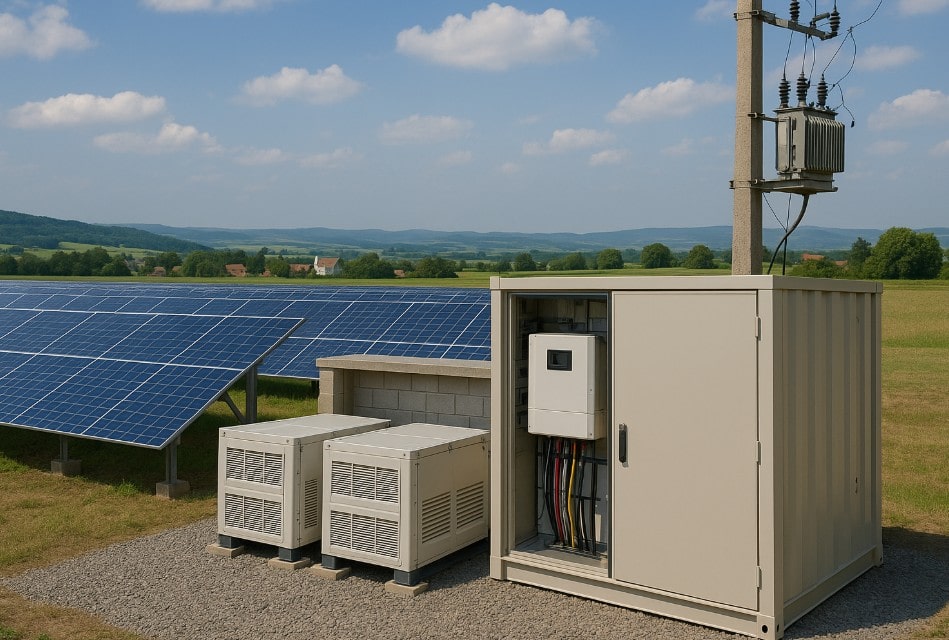

Kleinere europäische Länder beweisen, dass man kein riesiges Budget braucht, um im Technologiebereich führend zu sein. Diese Fallstudie zeigt, wie hybride PCS-Systeme diesen Ländern bei der Modernisierung helfen, wobei Echtzeitüberwachung, Energieeinsparungen und niedrigere Stromkosten den Wandel vorantreiben.
Länder wie Estland, Malta und Luxemburg haben eine bemerkenswerte Fähigkeit zur schnellen Technologieeinführung bewiesen. Dank ihrer kompakten Größe und zentralisierten Systeme können sie neue digitale Infrastrukturen ohne die in größeren Ländern üblichen Verzögerungen einführen. Diese Agilität ist ein klarer Vorteil bei der Implementierung von Hybrid-PCs.
Ziel in diesen Regionen ist nicht nur der Austausch alter Hardware. Es geht vielmehr darum, intelligentere und flexiblere Arbeitsumgebungen zu schaffen, die gleichzeitig Kosten und Energie sparen. Angesichts steigender Stromkosten in ganz Europa und eines stärkeren Fokus auf grüne IT sind energieeffiziente Lösungen unerlässlich geworden.
Hybrid-PCS sind für die Unterstützung sowohl traditioneller Büroarbeit als auch der ortsunabhängigen Zusammenarbeit konzipiert. Sie vereinen Mobilität mit hoher Leistung und verfügen häufig über fortschrittliche Energiemanagementsysteme. Diese Geräte lassen sich zentral verwalten und eignen sich daher ideal für Schulen, Behörden und Gesundheitseinrichtungen.
Ein wesentlicher Vorteil ist die Integration von Echtzeitüberwachung Mithilfe dieser Tools können IT-Abteilungen den Zustand der Geräte, den Energieverbrauch und die Betriebsmuster der gesamten Geräteflotte überwachen. Diese Transparenz ermöglicht es, Probleme schnell zu beheben und Nutzungsrichtlinien anzupassen, um Verschwendung zu reduzieren.
Darüber hinaus sind diese PCs für Folgendes ausgelegt: Energieeinsparungen Sie verbrauchen weniger Strom als ältere Desktop-Computer, oft dank effizienter Prozessoren, SSDs und intelligenter Energiesparmodi. Mit der Zeit summieren sich diese Einsparungen und führen zu spürbaren Reduzierungen der Stromrechnung.
In einem nicht näher genannten europäischen Staat mit weniger als fünf Millionen Einwohnern wurde im Rahmen eines koordinierten Hybrid-PC-Rollouts die Ausstattung von Schulen und Kommunalverwaltungen sichergestellt. Über einen Zeitraum von zwölf Monaten wurden mehr als 5.000 Geräte eingesetzt.
Einsatzziele:
Ermöglichung hybrider Arbeits- und Lernumgebungen
Untere Stromkosten durch effizientere Hardware
Überwachen Sie den Energieverbrauch und optimieren Sie ihn in Echtzeit
Vereinfachen Sie die IT-Verwaltung mit Remote-Tools
Bis zum Ende des ersten Jahres:
Monatlich Energieeinsparungen Im Durchschnitt 25 % pro Gebäude
Jährlich Stromkosten Die Einsparungen beliefen sich auf rund 300.000 €.
Dank Echtzeitüberwachung
Für die Implementierung wurden Hybrid-PCs mit Intel Evo- und AMD Ryzen Pro-Plattformen eingesetzt. Diese zeichneten sich durch lange Akkulaufzeit, geringe Wärmeentwicklung und Kompatibilität mit Unternehmensstandards für Sicherheit aus. Jedes Gerät war mit einer Cloud-Management-Konsole verbunden.
Die Managementplattform ermöglichte Folgendes:
Live-Auftritt und Stromkosten Tracking
Firmware-Updates per Fernzugriff
Nutzerverhaltensanalyse für Energieeinsparungen Einblicke
Darüber hinaus wurden viele Geräte so konfiguriert, dass sie nach 10 Minuten Inaktivität in einen Energiesparmodus wechseln. Diese Funktion wurde durch Remote-Richtlinienaktualisierungen erzwungen.
Die finanziellen Auswirkungen waren zwar erheblich, es gab aber auch weitere Vorteile:
Umweltverantwortung Die Reduzierung des Energieverbrauchs half dem Land, die Nachhaltigkeitsziele der EU zu erreichen.
Mitarbeiterproduktivität Schnellere und zuverlässigere Geräte verbesserten die täglichen Arbeitsabläufe.
Sicherheit und Compliance Alle Datenübertragungen wurden verschlüsselt, mit Unterstützung für Secure Boot und TPM.
Diese Ergebnisse zeigen, dass Hybrid-PCs mehr als nur operative Effizienz bieten. Sie unterstützen auch strategische Ziele wie die Reduzierung des CO2-Fußabdrucks und die digitale Reife.
Der Erfolg dieser Initiative liefert einen Fahrplan für ähnliche Transformationsprozesse. Zu den wichtigsten Erkenntnissen gehören:
Fang klein an Eine schrittweise Einführung ermöglicht Tests und Feedback vor der flächendeckenden Einführung.
Überwachung priorisieren Sichtbarkeit durch Echtzeitüberwachung hilft dabei, Leistung und Energieverbrauch zu optimieren.
Alles messen : Tracking Stromkosten und Nutzungstrends unterstützen die zukünftige Budgetierung und Planung.
Zugnutzer : Das Bewusstsein der Endnutzer für energieeffiziente Gewohnheiten verbessert die Ergebnisse.
Durch die Anwendung dieser Praktiken können andere Regierungen und Organisationen den Erfolg dieses kleinen europäischen Staates nachahmen.
Hybrid-PCS sind mehr als nur eine Hardware-Aufrüstung. In kleineren europäischen Staaten erzielen sie große Erfolge: höhere Flexibilität, geringerer Energieverbrauch und niedrigere Betriebskosten. Dank Funktionen wie Echtzeitüberwachung und optimiert Stromkosten Durch das Management tragen diese Geräte dazu bei, sowohl finanzielle als auch ökologische Vorteile zu erzielen.
Ob Sie ein IT-Programm im öffentlichen Sektor leiten oder ein privates Unternehmen führen, dieser Fall beweist eines ganz klar: Die Größe schränkt die Wirkung nicht ein, wenn die richtige Technologie vorhanden ist.
Abonnieren Sie uns, um in den Genuss von Veranstaltungspreisen zu kommen und einige der besten Preise zu erhalten.
 IPv6-Netzwerk unterstützt
IPv6-Netzwerk unterstützt

